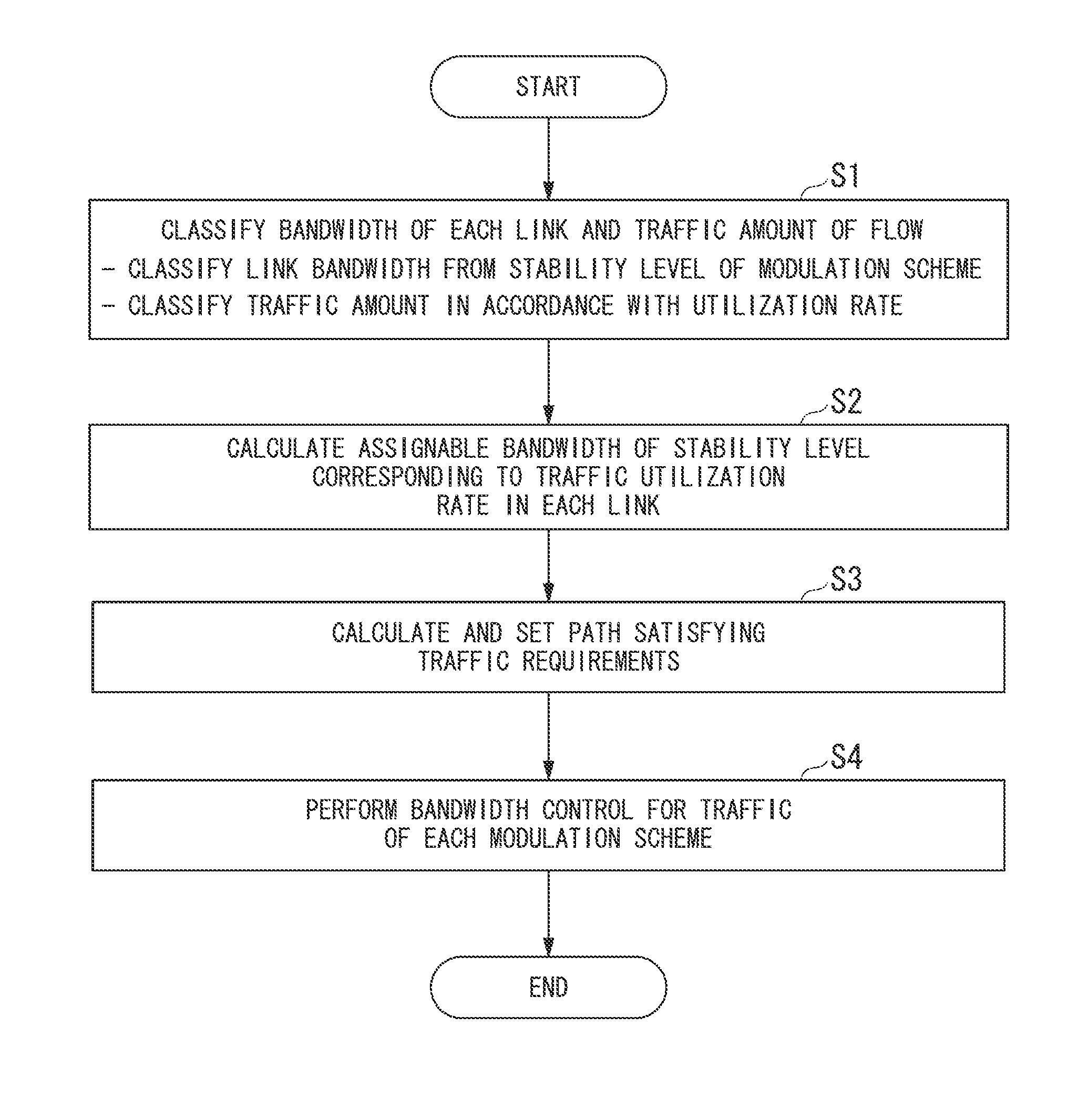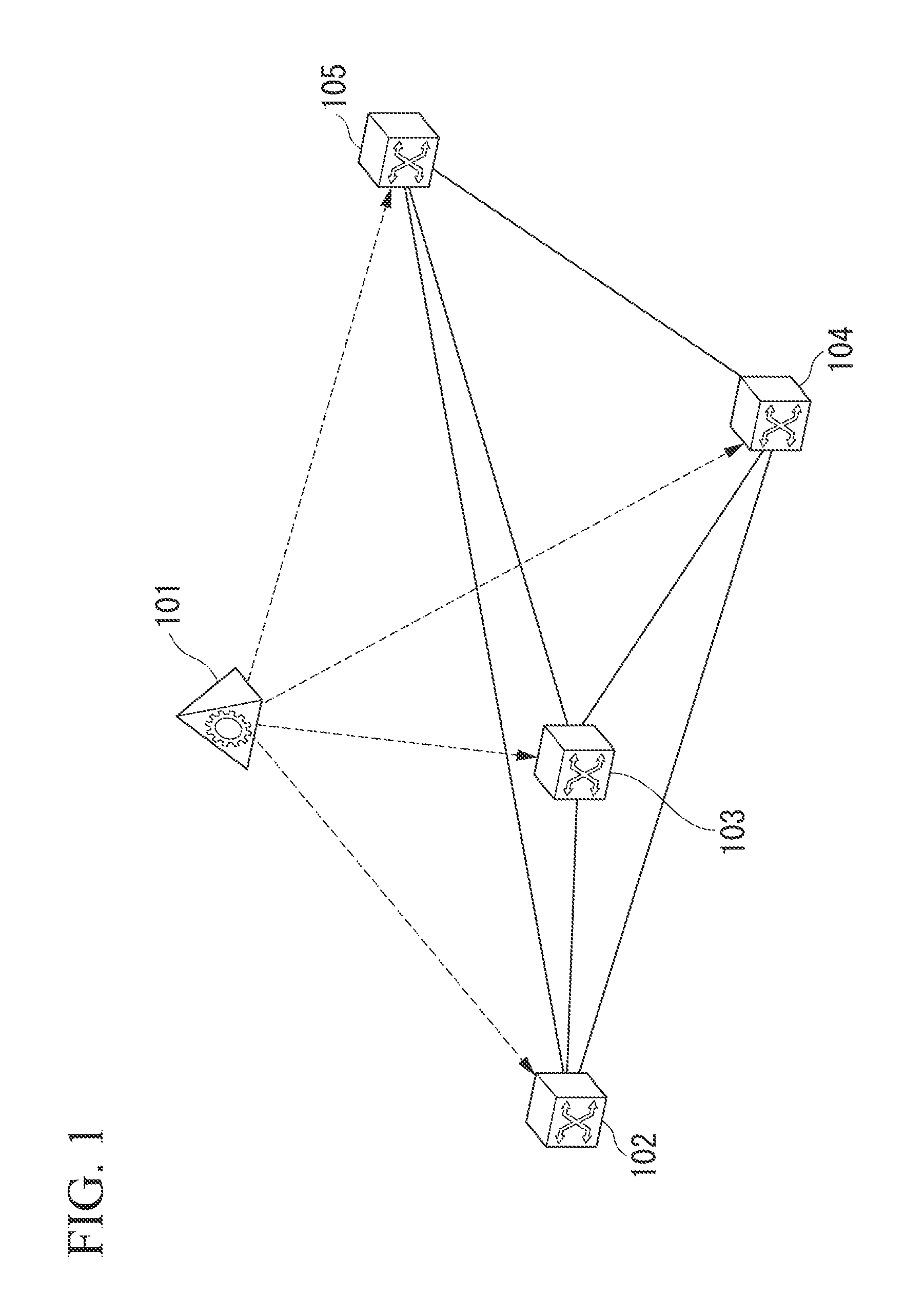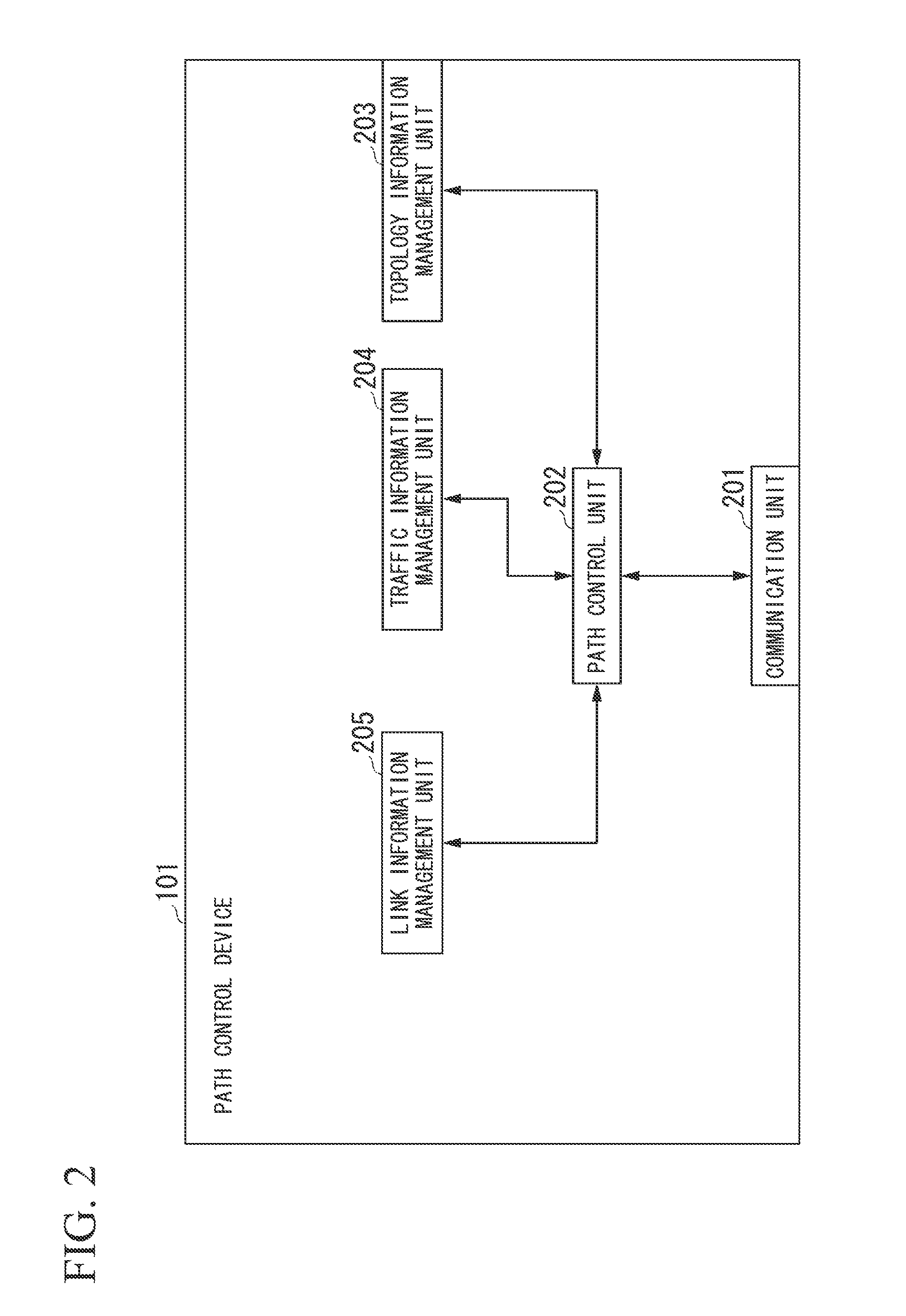Bandwidth control device, bandwidth control method, and wireless network system
a bandwidth control and wireless network technology, applied in data switching networks, instruments, frequency-division multiplexes, etc., can solve problems such as the difficulty of efficiently performing bandwidth allocation for traffic flowing through the same link, the problem of how to control bandwidth allocation among traffic, and the likely monopoly of bandwidth, so as to achieve the effect of accommodating more traffic and maintaining traffic communication quality
- Summary
- Abstract
- Description
- Claims
- Application Information
AI Technical Summary
Benefits of technology
Problems solved by technology
Method used
Image
Examples
example 1
[0096]As a first example of the present exemplary embodiment, an example in which two pieces of traffic (hereinafter referred to as traffic A and traffic B) use the same link will be shown. When the stability level of the link bandwidth is that as illustrated in FIG. 5A, bandwidths are allocated to two pieces of traffic based on utilization rates.
[0097]Here, for the traffic A, the utilization rate of 0 to 20 Mbps is assumed to be 100 and the utilization rate of 20 to 60 Mbps is assumed to be 80. In addition, for the traffic B, the utilization rate of 0 to 20 Mbps is assumed to be 100 and the utilization rate of 20 to 40 Mbps is assumed to be 50.
[0098]In this case, for the traffic A, the path control unit 202 allocates a bandwidth of the stability level 100 at 20 Mbps and a bandwidth of the stability level 90 at 40 Mbps. Likewise, for the traffic B, the path control unit 202 allocates a bandwidth of the stability level 100 at 20 Mbps and a bandwidth of the stability level 70 at 20 Mb...
example 2
[0101]As a second example of the present exemplary embodiment, a process of the path control unit 202 when a CIR, an average rate, and a peak rate of traffic are each known will be described.
[0102]In this case, in each link, bandwidths obtained from a stability level of a link bandwidth (i.e., a bandwidth capable of being maintained at a minimum by each link, an average bandwidth of each link, and a maximum bandwidth capable of being realized by each link) are used.
[0103]The bandwidth of capable of being maintained at a minimum by each link and the maximum bandwidth capable of being realized by each link can be obtained using threshold values of a stability level serving as references. That is, the bandwidth capable of being maintained at a minimum by each link is obtained by setting a stability level considered as a lower limit and determining a maximum bandwidth satisfying the stability level of the lower limit. In addition, the maximum bandwidth capable of being realized by each ...
example 3
[0112]A third example of the present exemplary embodiment relates to the case in which a bandwidth of traffic is classified so that the utilization rate is most consistent with the stability level of the link bandwidth as an example of a bandwidth allocation method in a process of the path control unit 202 of step S2.
[0113]Here, it is assumed that the stability levels corresponding to bandwidths of a link are 100 at 0 to 40 Mbps, 90 at 0 to 80 Mbps, and 50 at 80 to 108 Mbps.
[0114]First, a bandwidth of traffic is classified so that the values of utilization rates are as close as possible the values of the stability levels of the link.
[0115]FIG. 7 is an explanatory diagram illustrating a traffic classifying method to be performed by the path control unit 202 of the path control device.
[0116]In order to classify a bandwidth of traffic so that the values of utilization rates are as close as possible the values of stability levels of a link bandwidth, it is possible to classify the bandw...
PUM
 Login to View More
Login to View More Abstract
Description
Claims
Application Information
 Login to View More
Login to View More - R&D
- Intellectual Property
- Life Sciences
- Materials
- Tech Scout
- Unparalleled Data Quality
- Higher Quality Content
- 60% Fewer Hallucinations
Browse by: Latest US Patents, China's latest patents, Technical Efficacy Thesaurus, Application Domain, Technology Topic, Popular Technical Reports.
© 2025 PatSnap. All rights reserved.Legal|Privacy policy|Modern Slavery Act Transparency Statement|Sitemap|About US| Contact US: help@patsnap.com



